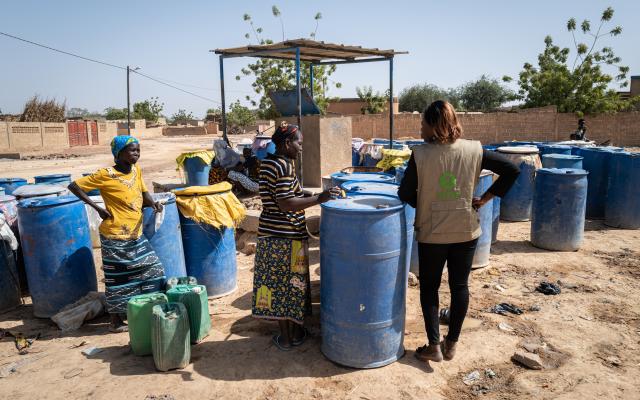
In 2019, the number of internally displaced people in Burkina Faso has increased tenfold, reaching more than half a million by the end of the year. They are in desperate need of food, shelter, and healthcare, but most urgently they need water. Photo: Sylvain Cherkaoui/Oxfam
Over the last years, armed groups have spread over the Sahel region causing a humanitarian and security crisis, and devastating lives. Since the end of 2018 things have gone downhill fast. The violence, which had been affecting populations in northern Mali since 2012, has gradually shifted towards the center, as far as the Liptako-Gourma area in the Mali-Burkina-Niger Faso border region.
In Burkina Faso, after taking root in the north, the insecurity spread to the east of the country, affecting the most marginalized regions. Humanitarian needs have exploded since last year, with a 1200% increase in the number of people forced to flee their homes. In 2019 the number of IDPs jumped ten-fold to 560,000 with a further 200,000 people displaced at the debut of 2020. The situation continues to deteriorate rapidly with 2.2 million people in need of humanitarian assistance.
No water just fear — communities at risk

More people are arriving every day to already vulnerable communities and the water infrastructure just cannot cope with demands. Photo: Sylvain Cherkaoui/Oxfam
There are now nearly 800,000 people internally displaced. Nearly all of them (94%) hosted by vulnerable communities who themselves are struggling with poverty and food shortages. Access to drinking water has become a daily challenge for the displaced and their hosts alike. 1.9 million people are in urgent need of water.
This on top of the chronic food insecurity, and an in atmosphere charged with fear of abductions, killings, armed reprisals, psychological violence, and targeted attacks on schools and health centers. Livelihoods have been devastated both by displacement and the effects of climate change (flooding and drought) and more people are arriving every day to already struggling communities.
Heightened risk of hygiene-related illness
In some towns, the rate of access to safe water has fallen by 40% with the existing, limited, infrastructure stretched beyond its limits by overuse. Women and girls are queueing for hours to collect a tiny amount of water, often not enough to meet their family’s daily needs. Thousands of people are living in crowded conditions without water to drink or wash, health services are overstretched, diarrheal diseases are on the rise — with worse feared if these conditions continue.
Along with our partners, we have reached more than 400 000 people in the Sahel region. But we are racing to meet needs and to prevent hygiene-related diseases.
The humanitarian situation continues to worsen, access is increasingly difficult, whilst resources are woefully scarce.
Help Oxfam save lives in emergencies
When an emergency happens, Oxfam is ready to respond. We work with our partners on the ground to save lives and reduce future risks. With your support, we help make sure that people who have lost everything have access to immediate life-saving essentials.
